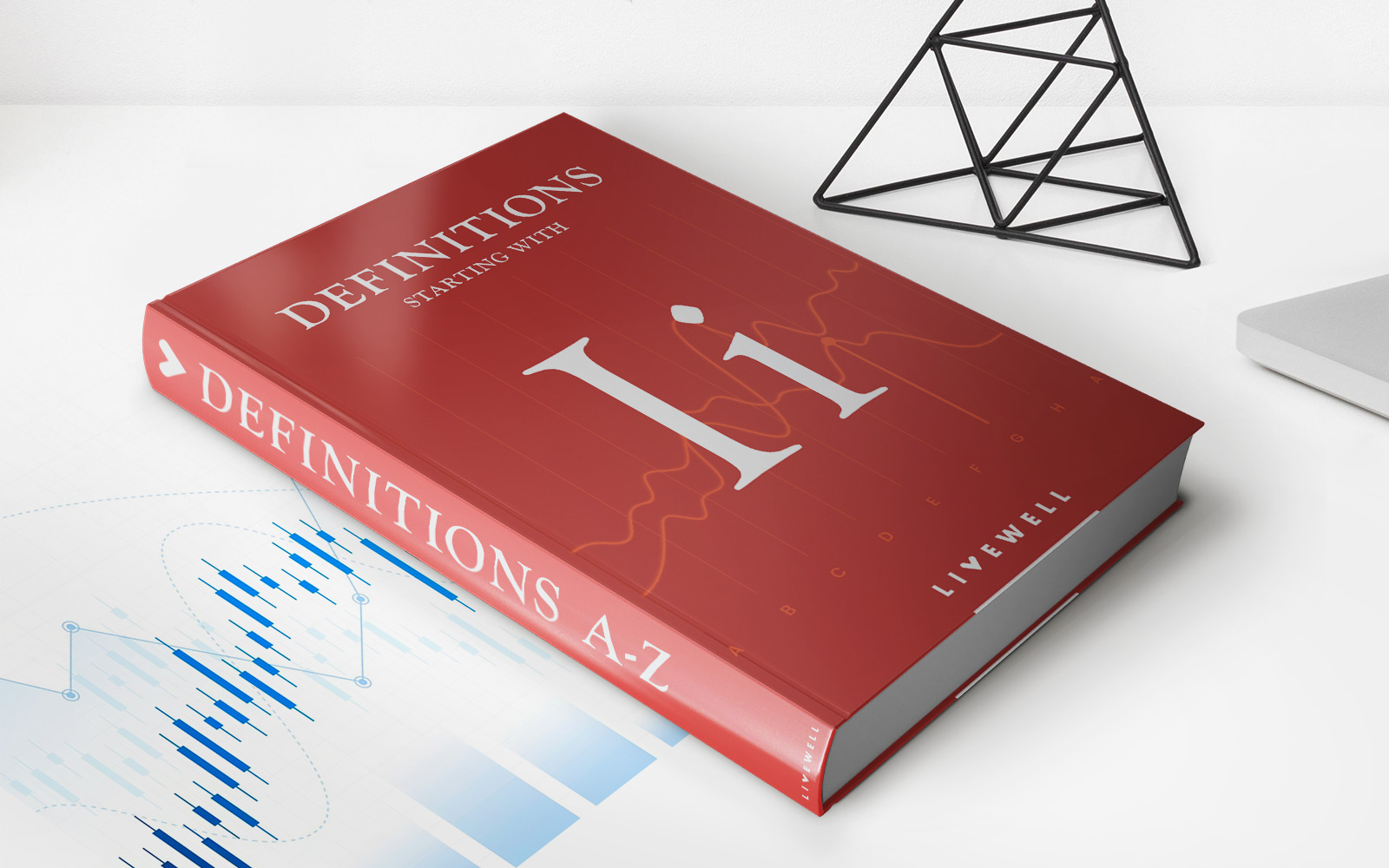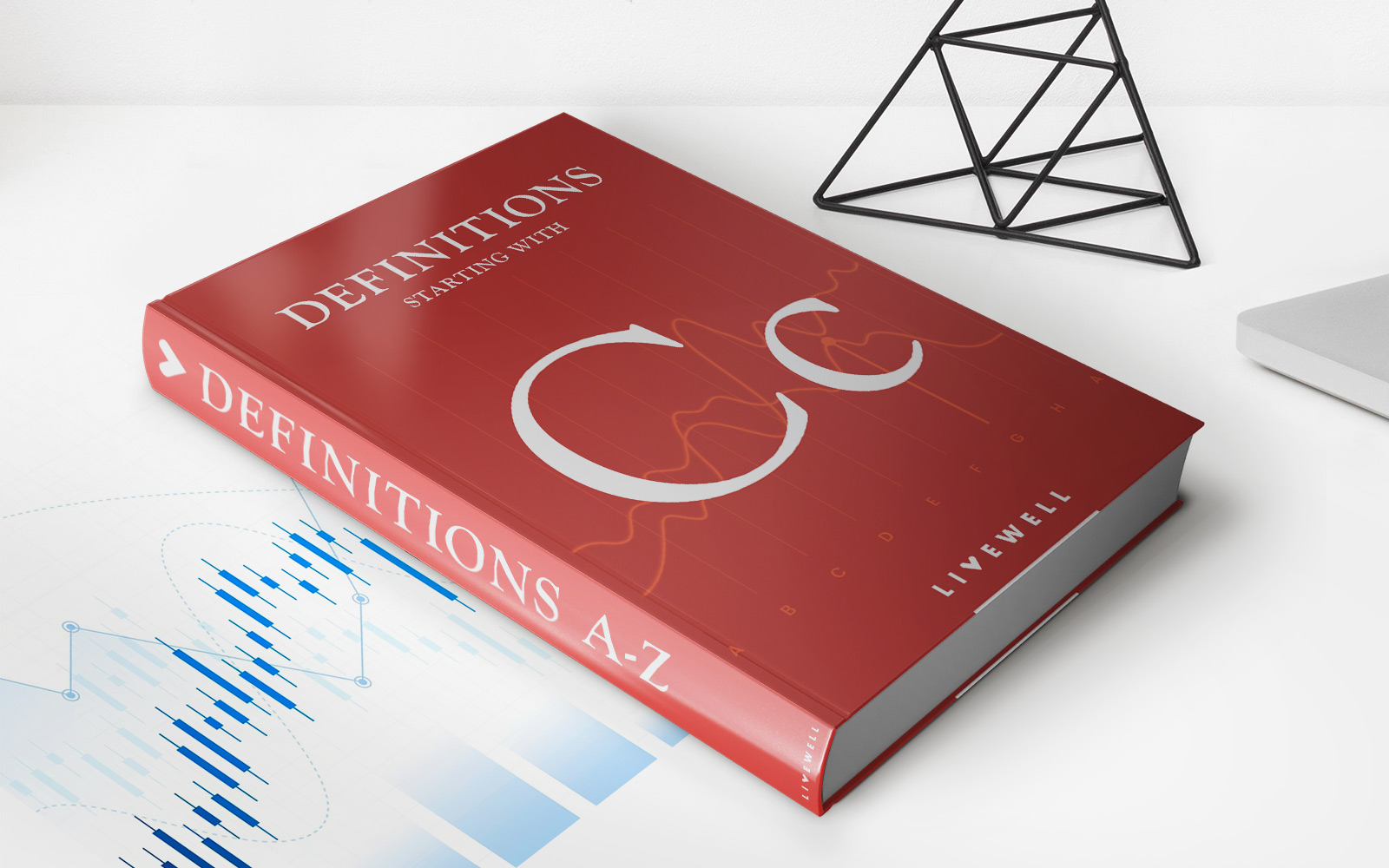

Finance
Why Use Target Capital Structure In WACC
Modified: February 21, 2024
Discover the importance of using target capital structure in finance and its impact on WACC calculation. Improve your understanding of finance with this insightful guide.
(Many of the links in this article redirect to a specific reviewed product. Your purchase of these products through affiliate links helps to generate commission for LiveWell, at no extra cost. Learn more)
Table of Contents
- Introduction
- Definition of Target Capital Structure
- Importance of Target Capital Structure
- Weighted Average Cost of Capital (WACC) and its Calculation
- Benefits of Using Target Capital Structure in WACC
- Limitations of Using Target Capital Structure in WACC
- Factors Influencing Target Capital Structure
- Conclusion
Introduction
When analyzing a company’s financial structure, determining the optimal mix of debt and equity capital is of utmost importance. This mix, known as the capital structure, has a direct impact on a company’s profitability, risk, and overall financial health. It is essential for companies to establish a target capital structure that aligns with their long-term financial goals and objectives.
A target capital structure represents the ideal balance between debt and equity financing that a company aims to maintain over time. This target is based on various factors, including the company’s industry, growth prospects, cash flow generation, and risk tolerance. By setting a target capital structure, companies can effectively manage their financing strategies and optimize their financial performance.
The Weighted Average Cost of Capital (WACC) is a widely used metric in finance that measures a company’s average cost of capital by weighting the cost of debt and equity based on their proportional contributions to the capital structure. The WACC plays a crucial role in investment decision-making, valuation, and financial planning.
In this article, we will delve into the concept of target capital structure and its importance in the calculation of WACC. We will explore the benefits and limitations of using a target capital structure in determining the WACC and discuss the factors that influence a company’s decision in setting their target capital structure.
By understanding the intricacies of target capital structure and its relationship with WACC, companies can make informed financial decisions, enhance their profitability, and create value for their shareholders. Let’s dive deeper into the world of target capital structure and its significance in optimizing the financial performance of a company.
Definition of Target Capital Structure
The target capital structure refers to the specific combination of debt and equity that a company aims to have within its overall capitalization. It represents the ideal proportion of debt and equity that a company strives to maintain in order to achieve its long-term financial objectives.
Debt capital refers to funds borrowed by a company from external sources, such as banks or bondholders, that need to be repaid over time with interest. Equity capital, on the other hand, represents the ownership interest in a company and can be obtained through issuing shares to investors.
The target capital structure is typically expressed as a percentage split between debt and equity. For example, a company may target a capital structure of 70% debt and 30% equity. This proportion can vary depending on factors such as industry norms, the company’s risk tolerance, and its growth prospects.
It is important to note that the target capital structure is not a fixed allocation, but rather a desired range that a company aims to maintain. In practice, a company’s actual capital structure may deviate from its target due to various factors, such as changes in market conditions, shifts in business strategy, or financing needs for specific projects.
Setting a target capital structure involves careful consideration of several key factors. These include the company’s current financial position, its cost of capital, cash flow requirements, projected growth, and risk profile. The goal is to strike a balance between the cost and availability of debt financing, and the dilution and cost of equity financing.
By establishing a target capital structure, companies can effectively manage their financial resources and ensure they have the optimal mix of debt and equity to support their operations and growth initiatives. This strategic decision can impact a company’s profitability, risk profile, and overall financial stability.
Furthermore, the target capital structure serves as a benchmark for evaluating a company’s actual capital structure. By monitoring any deviations from the target, management can take appropriate steps to realign the capital structure and maintain the desired balance between debt and equity.
Importance of Target Capital Structure
Establishing a target capital structure is crucial for companies as it plays a vital role in shaping their financial stability, risk management, and overall value creation. Here are some key reasons why target capital structure is important:
- Optimal Cost of Capital: By setting a target capital structure, companies can strive to achieve an optimal mix of debt and equity that minimizes their overall cost of capital. This is important because the cost of capital directly affects a company’s profitability and ability to undertake new investment opportunities. A target capital structure helps companies determine the right balance between lower-cost debt financing and higher-cost equity financing.
- Risk Management: The target capital structure allows companies to manage their risk exposure effectively. By analyzing their risk tolerance and considering industry norms, companies can determine the appropriate level of debt and equity to mitigate financial risks. Too much debt can increase the risk of financial distress and default, while too much equity can dilute existing shareholders’ ownership. The target capital structure ensures a balanced approach to risk management.
- Financial Flexibility: A target capital structure provides companies with financial flexibility. It allows them to adapt to changing market conditions and take advantage of strategic opportunities. For example, during periods of economic uncertainty, companies with a lower target debt ratio may be better positioned to handle potential cash flow disruptions and maintain financial stability.
- Investor Confidence: A well-defined target capital structure can enhance investor confidence by demonstrating a disciplined approach to capital management. Investors often consider a company’s capital structure when assessing its financial strength and stability. A consistent target capital structure helps create transparency and signals to investors that the company has a clear plan for utilizing its financial resources.
- Strategic Decision-making: The target capital structure guides strategic decision-making regarding funding sources for new projects, acquisitions, or expansion initiatives. Companies can evaluate the most favorable financing options by considering their cost of capital, cash flow generation, and risk appetite. This ensures that capital allocation decisions align with the company’s long-term financial goals and optimize shareholder value.
In summary, the target capital structure is crucial for companies as it provides a framework for determining the optimal mix of debt and equity financing. By establishing a target capital structure, companies can optimize their cost of capital, manage risk, maintain financial flexibility, instill investor confidence, and make strategic decisions that support long-term growth and profitability.
Weighted Average Cost of Capital (WACC) and its Calculation
The Weighted Average Cost of Capital (WACC) is a financial metric used to determine the average cost of financing for a company. It represents the blended cost of debt and equity that a company incurs to finance its operations and investments. By calculating the WACC, companies can assess the expected return they need to provide to investors to maintain their current capital structure.
The WACC is calculated by assigning weights to the cost of debt and the cost of equity, based on their respective proportions in the company’s target capital structure. The formula for calculating WACC is:
WACC = (E/V) * Ke + (D/V) * Kd * (1 – Tc)
Where:
- E is the market value of equity
- V is the total market value of the company’s equity and debt
- Ke is the cost of equity
- D is the market value of debt
- Kd is the cost of debt
- Tc is the corporate tax rate
To calculate the WACC, the cost of equity (Ke) is determined using various valuation models, such as the Capital Asset Pricing Model (CAPM) or Dividend Discount Model (DDM). The cost of debt (Kd) is calculated by considering the interest rate on the company’s debt and any associated fees or expenses.
The weights for equity (E/V) and debt (D/V) are determined by dividing the market value of equity and debt by the total market value of the company’s financing sources (equity + debt). The corporate tax rate (Tc) accounts for the tax shield on the interest expense from debt financing.
By using the target capital structure, companies can determine the appropriate weights for equity and debt in the WACC calculation. The resulting WACC provides a benchmark for evaluating investment opportunities or estimating the required rate of return for capital budgeting decisions.
It is important to note that the WACC is not a static metric and can change over time as a company’s capital structure evolves. Factors such as changes in interest rates, market conditions, and shifts in the company’s risk profile can impact the WACC.
Overall, the WACC is a valuable tool for companies as it helps in assessing the cost of capital and making informed financial decisions. It provides insights into the minimum return the company needs to generate to satisfy its investors and maintain the desired capital structure.
Benefits of Using Target Capital Structure in WACC
Using a target capital structure in the calculation of Weighted Average Cost of Capital (WACC) offers several benefits for companies. Let’s explore some of the key advantages:
- Accurate Cost of Capital: Incorporating the target capital structure in WACC calculation provides a more accurate estimate of the company’s overall cost of capital. By considering the planned mix of debt and equity financing, the WACC reflects the cost of capital that aligns with the company’s long-term financial goals and objectives.
- Improved Financial Decision-making: The WACC calculated using the target capital structure serves as a reliable benchmark for evaluating investment projects. It helps assess whether potential investments will generate returns exceeding the cost of capital, enhancing the company’s decision-making process and ensuring optimal allocation of financial resources.
- Enhanced Capital Budgeting: Target capital structure in WACC allows for more accurate evaluation of investment opportunities. By considering the proportionate use of debt and equity in the capital structure, the WACC guides decisions on accepting or rejecting projects, leading to better capital allocation and improved long-term profitability.
- Strategic Financing Decisions: Having a target capital structure aids in strategic financing decisions, such as raising new debt or equity capital. It enables companies to determine the most cost-effective and efficient financing mix to achieve desired capitalization levels and support growth strategies.
- Optimization of Capital Structure: Utilizing a target capital structure in WACC analysis enables companies to assess their actual capital structure against the desired mix. Any deviations can prompt management to take corrective actions, such as refinancing or adjusting debt-equity ratios, to move closer to the target and optimize their financial structure.
By incorporating the target capital structure in the WACC calculation, companies can obtain a more realistic estimate of the cost of capital and make informed financial decisions. This helps align financing strategies with long-term goals, improve capital budgeting, and enhance the overall financial performance of the company.
Limitations of Using Target Capital Structure in WACC
While using a target capital structure in the calculation of Weighted Average Cost of Capital (WACC) offers several benefits, it is important to be aware of the limitations associated with this approach. Here are some key limitations:
- Dynamic Nature of Capital Structure: The target capital structure is based on assumptions and projections which may not always hold true in the dynamic business environment. Market conditions, industry trends, and company-specific factors can lead to changes in the actual capital structure over time. Therefore, it’s important to regularly reassess and adjust the target capital structure as needed.
- Marketability of Securities: The WACC calculation assumes that securities, both debt, and equity, can be sold or issued with ease at fair market prices. However, in reality, market conditions may affect the marketability of securities, making it challenging to raise capital or adjust the capital structure as desired. This limitation can impact the accuracy of the WACC calculation.
- Tax Considerations: WACC incorporates the tax shield benefit from interest expense on debt financing. However, the tax landscape can evolve, with changes in tax laws or rates that may impact the tax shield benefit. Therefore, it’s essential to consider potential changes in tax policies when using the target capital structure to calculate the WACC.
- Variability of Discount Rates: The cost of equity and the cost of debt used in the WACC calculation are estimated based on various factors, such as risk-free rates, market risk premiums, and credit ratings. These estimates are subject to variability and uncertainty. Changes in these factors can influence the accuracy of the WACC calculation and the resulting cost of capital.
- Industry and Company-specific Considerations: Each industry and company has its own unique characteristics and risk profiles. Therefore, using a generic target capital structure in the WACC calculation may not adequately capture industry-specific factors or the company’s individual risk profile. It’s important to consider these factors and tailor the target capital structure accordingly.
- Access to Capital: While a target capital structure indicates the desired mix of debt and equity, the availability of capital at reasonable terms is not always guaranteed. External factors such as market conditions, industry trends, and the company’s creditworthiness may impact the ability to obtain financing at the desired proportions. This can affect the feasibility of achieving the target capital structure and subsequently the accuracy of the WACC calculation.
Despite these limitations, using a target capital structure in the WACC calculation remains a valuable tool for estimating the overall cost of capital and guiding financial decision-making. It is important to be mindful of these limitations and regularly reassess the target capital structure in order to make informed and effective financial decisions.
Factors Influencing Target Capital Structure
The target capital structure of a company is influenced by a variety of factors that can vary across industries and individual companies. These factors are taken into consideration when determining the ideal mix of debt and equity financing. Here are some key factors that can influence the target capital structure:
- Industry Norms: Different industries have different levels of leverage that are considered standard. Certain industries, such as utilities or real estate, tend to have higher debt levels due to stable cash flows and tangible assets. On the other hand, industries such as technology or healthcare may have lower debt levels due to higher growth potential and intangible assets.
- Business Risk: The risk profile of a company is an important factor in determining the target capital structure. Companies with stable cash flows and low business risk may opt for higher debt levels to take advantage of the tax shield benefits and reduce the cost of capital. Conversely, highly volatile or cyclical businesses may prefer a lower debt ratio to mitigate the risk of financial distress during downturns.
- Growth Prospects: Companies with significant growth opportunities often require more financing to support their expansion plans. Such companies may target a higher proportion of equity financing to attract investors and retain flexibility for future funding needs. Conversely, mature companies with stable operations and limited growth prospects may have a higher proportion of debt in their capital structure.
- Financial Flexibility: Companies that prioritize financial flexibility and liquidity may opt for a lower debt ratio to maintain a strong balance sheet and reduce the risk of default. Having a lower debt ratio provides more room for maneuverability during economic downturns or unforeseen events. In contrast, companies with consistent cash flows and less need for short-term liquidity may choose a higher debt ratio to leverage their operations and enhance returns to shareholders.
- Cost of Capital: The cost of debt and equity financing plays a significant role in determining the target capital structure. If the cost of debt is low, companies may be inclined to increase their debt levels to lower the overall cost of capital. Conversely, if the cost of equity is high or if there are limitations on equity issuance, companies may lean towards a higher proportion of debt financing.
- Legal and Regulatory Environment: Regulations pertaining to debt-to-equity ratios, interest deductibility, and other factors can influence the target capital structure. Legal and regulatory requirements can impose limitations or constraints on the amount of debt a company can employ, which may impact the target capital structure selection.
It is important to note that the target capital structure is not fixed and can evolve over time as a result of changes in these influencing factors or shifts in the company’s financial objectives. Companies should regularly reassess and adjust their target capital structure to ensure alignment with their specific circumstances and long-term goals.
By considering these influential factors, companies can develop a well-informed target capital structure that supports their growth plans, balances risk and return, and optimizes their overall financial performance.
Conclusion
The target capital structure is an essential element in a company’s financial management toolkit. It represents the desired mix of debt and equity financing that firms aim to maintain to achieve their long-term financial goals. By incorporating the target capital structure in the calculation of Weighted Average Cost of Capital (WACC), companies can make more informed financial decisions and enhance their overall financial performance.
The benefits of using a target capital structure in WACC analysis are numerous. It provides a more accurate estimate of the cost of capital, improves financial decision-making, enhances capital budgeting processes, supports strategic financing decisions, and facilitates the optimization of the company’s overall financial structure. Additionally, it signals to investors that the company has a well-defined plan for utilizing its financial resources and maintaining financial stability.
However, it is important to acknowledge the limitations associated with using a target capital structure. These include the dynamic nature of capital structure, marketability of securities, tax considerations, variability of discount rates, industry and company-specific considerations, and access to capital. Companies must be mindful of these limitations and adapt their target capital structure as needed to align with changing market conditions and business realities.
In conclusion, the target capital structure plays a crucial role in shaping a company’s financial stability, risk management, and value creation. It guides financial decision-making, supports capital budgeting, and ensures that the cost of capital accurately reflects the company’s long-term financing goals. By carefully considering industry norms, business risk, growth prospects, financial flexibility, cost of capital, and regulatory requirements, companies can establish a target capital structure that optimizes their financial performance and positions them for sustainable growth and success.














